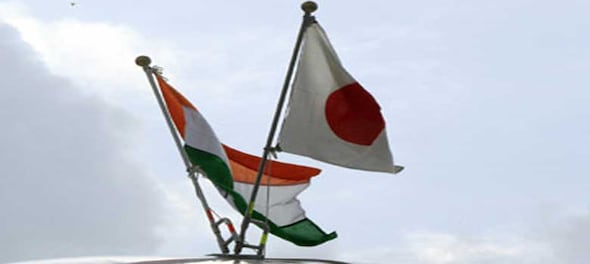
"It gives me immense pleasure to return to the land where the dynamics of the world — the Pacific and the Indian Oceans — converge,” wrote Japanese Prime Minister Fumio Kishida in a column for the Indian Express as he embarked on his second visit to India as a chief of the country. The highlight of his short but significant tour was the announcement of a new plan to promote open and free Indo-Pacific, through which he pledged $75 billion to the region by 2030.
This billions of dollars in investment, which is considered to act as an ‘absolute pin’ against China’s assertiveness, will come from private investment and yen loans and also by increasing official governmental assistance and grants. Kishida also sought solidarity from countries of the ‘Global South’, a broad term referred to countries in Africa, Asia, Oceania and Latin America.
What is Japan’s Free and Open Indo-Pacific (FOIP) concept?
Kishida, in his speech at the Indian Council of World Affairs (ICWA), titled ‘The Future of the Indo-Pacific-Japan’s New Plan for a ‘Free and Open Indo-Pacific-Together with India, as an Indispensable Partner’, announced four new pillars of FOIP.
The first pillar is about the principles for peace and rules for prosperity, the second one emphasises on addressing challenges in an Indo-Pacific way, whereas the third one focuses on multi-layered connectivity, and the last one is about extending efforts for security and safe use of the “sea” to the “air”.
Japan’s FOIP policy believes that a key for stability and prosperity in the international community is dynamism that is created by combining two continents — Asia and Africa — and two oceans — Pacific and Indian. It identifies piracy, terrorism, proliferation of weapons of mass destruction (WMD), natural disasters and attempts to change the status quo as prominent challenges to the region.
It also underlines the importance of Association of Southeast Asian Nations’ (ASEAN) centrality and unity for stability and prosperity of every country and the region as a whole. In his India visit, Kishida announced a new contribution of USD 100 million to the Japan-ASEAN Integration Fund. The official FOIP policy document of Japan mentions, “Japan will cooperate with any country that supports this idea.”
 Image Source: Ministry of Foreign Affairs, Japan
Image Source: Ministry of Foreign Affairs, JapanJapan sees enhancing connectivity as an important way through which ASEAN could be used as a hinge to secure regional stability and achieve prosperity between Asia and Africa. Its major connectivity initiatives involve East-West Economic Corridor, Southern Economic Corridor ( in South West Asia), North East Connectivity Improvement Project (in India), Bengal Bay Industrial Growth Zone, Mombasa/Northern Corridor, etc.
 Image Source: Ministry of Foreign Affairs, Japan
Image Source: Ministry of Foreign Affairs, JapanImpact on India
At the 46th joint meeting of the India-Japan Business Cooperation Committee, Japanese ambassador to India, Hiroshi Suzuki, said, “A Japan Bank for International Cooperation (JBIC) worldwide survey has shown that India tops the list for future investment targets for mid- and long-term investment”.
Kishida, in his March visit, announced plans to invest 5 trillion yen in India over five years. “Japan is the fifth-largest investor in India, with around 1,450 Japanese companies operating in the country today,” wrote Financial Express in a recent report.
It added that with Memorandums of Cooperation signed by the two countries on Technical Intern Training Programme (TITP) as well as Specified Skilled Worker (SSW), they are also cooperating in the areas of skill development and the movement of skilled workers.
Besides ASEAN, South Asia, especially Northeast India, has been the second area where Japan’s policy focusses predominantly. In his article, Kishida had mentioned, “It is particularly pleasing to see steady progress in the high-speed railway project, which is our flagship project, and efforts towards realising the target of JPY 5 trillion of public and private investment and financing from Japan to India in the next five years as announced by our two governments last year.”
 Japan’s connectivity initiatives, Image Source: Ministry of Foreign Affairs, Japan
Japan’s connectivity initiatives, Image Source: Ministry of Foreign Affairs, JapanEconomic partnerships in focus
To achieve prosperity, the policy focusses on vibrant economic partnerships including Free Trade Agreements (FTAs) and investment treaties by ‘improving business environment.’ Kishida in his speech also spoke about introducing a new framework for private capital mobilisation-type grant aid which will attract investments.
He also assured increased cooperation in areas such as cyberspace. Japan will be providing USD 50 million to vulnerable countries in Asia, the Middle East, and Africa as emergency food aid.
“As Japan and India assume the Presidencies of the G7 and the G20 respectively, together with Prime Minister Modi, I am resolved to renew the pledge and do utmost to lead this region and the world,” were Kishida’s concluding remarks in his article for the Indian Express.
First Published: Mar 28, 2023 12:58 PM IST
Check out our in-depth Market Coverage, Business News & get real-time Stock Market Updates on CNBC-TV18. Also, Watch our channels CNBC-TV18, CNBC Awaaz and CNBC Bajar Live on-the-go!


Stampede-like situation disrupts Rahul Gandhi, Akhilesh Yadav's joint rally in Uttar Pradesh
May 19, 2024 4:26 PM
Ladakh Lok Sabha election: With Independent candidate's entry, it's now a 3-way contest for BJP and Congress
May 19, 2024 4:01 PM

